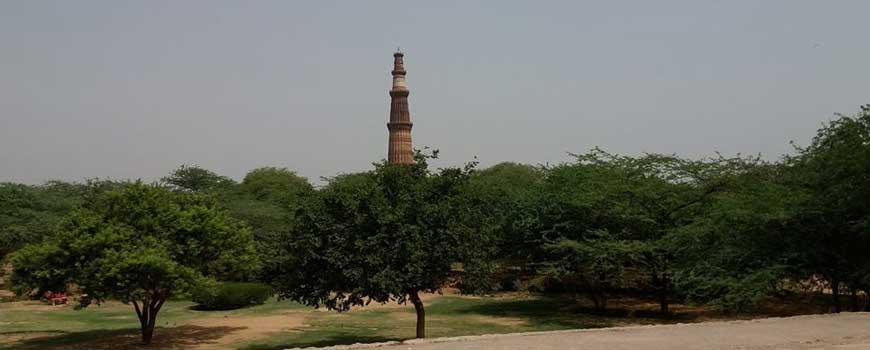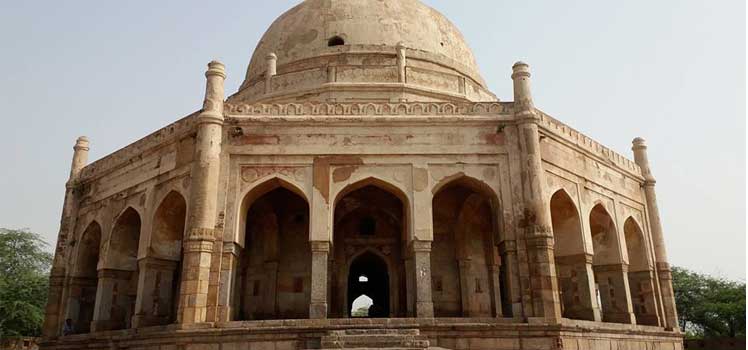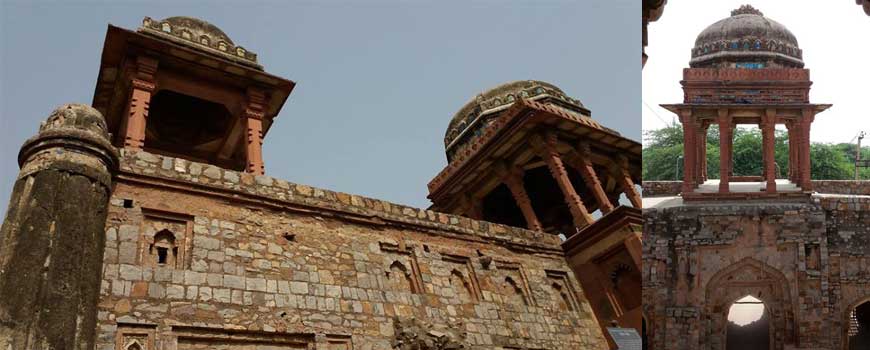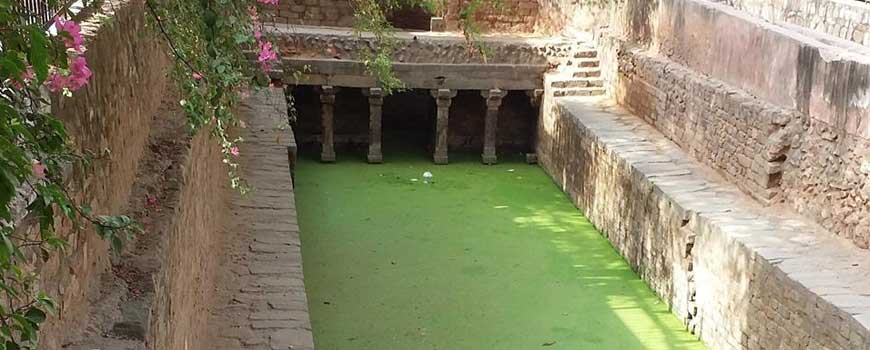
Visited and photographed on 22nd May. Mohd. Quli Khan was a brother of Adam Khan, foster brother of Akbar. His tomb, built in the 17th century, lies close to the Qutub Minar, affording a beautiful view of the monument, within the ruins of the first city of Delhi.
It was bought by Sir Thomas Theophilus Metcalfe (1795–1853), the Governor General last British Resident of Delhi. He converted into a `retreat’ called Dilkhusha (delight of the heart) by adding a structure all around it and surrounding it with extensive gardens and `follies’.
There are two meaning of the word `Follies’ one of these being - a costly ornamental building with no practical purpose, especially a tower or mock-Gothic ruin built in a large garden or park.
Metcalf used the building as a residence away from the main city of Delhi which lay at quite a distance. It was a special retreat during the monsoon months, providing an excellent view of the Qutub minar and surrounded by lakes and well kept gardens. Metcalf also rented it out to visitors and it is mentioned specially to honeymoon couples.































